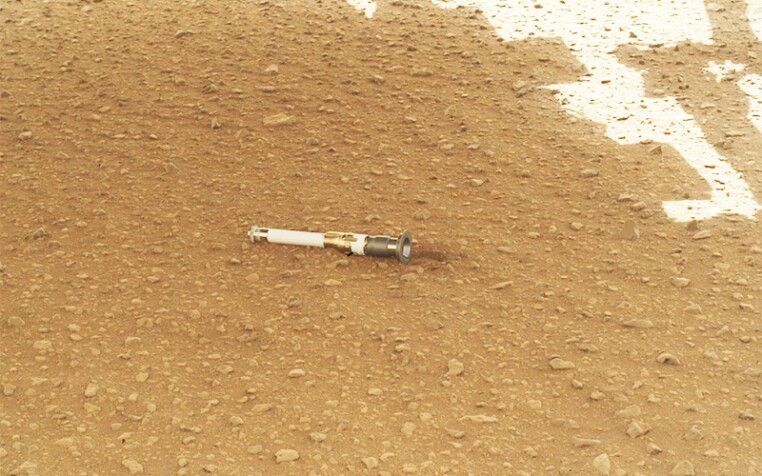NASA Delays Mars Sample Return Plans, Seeks New Ideas

A rock sample dropped by the Perseverance rover on Mars.
(NASA / JPL-Caltech / MSSS)
On Monday, NASA released its response
Under its new schedule, design work on the lander and the ascent vehicle will proceed at a “low level” for a time in parallel with a review of ideas solicited from outside the agency that could help lower costs or shorten the mission timeline. NASA indicated it plans to spend $310 million on MSR in fiscal year 2024, just above the $300 million minimum set by Congress, and that it will only request $200 million for fiscal year 2025. In a statement,
While NASA is seeking “out-of-the-box options” for the mission, particularly the ascent vehicle, the agency has identified some expected features of revised mission plans. For instance, it anticipates that the Perseverance rover, which is currently caching samples on Mars, will return to the floor of the Jezero Crater once it completes sample collection and enter a “quiescent” state to await the arrival of the lander, and that it may resume science investigations after delivering samples.
Plans no longer call for two sample-retrieval helicopters to be carried on the lander, though NASA has left open the possibility that one could still be included for redundancy. The lander itself is now set to be powered by a radioisotope power source rather than solar power to increase its resilience. The European Space Agency’s component of the project, a spacecraft that will make a round trip back to Earth, would launch in 2030 and remain in Mars orbit until NASA’s component of the mission transfers its samples to the spacecraft.
This news brief originally appeared in FYI’s newsletter for the week of April 15.


